Tree-clearing Old Belair Rd junction plan divides community
The State Government has been asked to rethink a $20 million upgrade of a notorious Old Belair Road intersection amid claims hundreds of native trees could be axed with minimal improvement to traffic flow or safety.

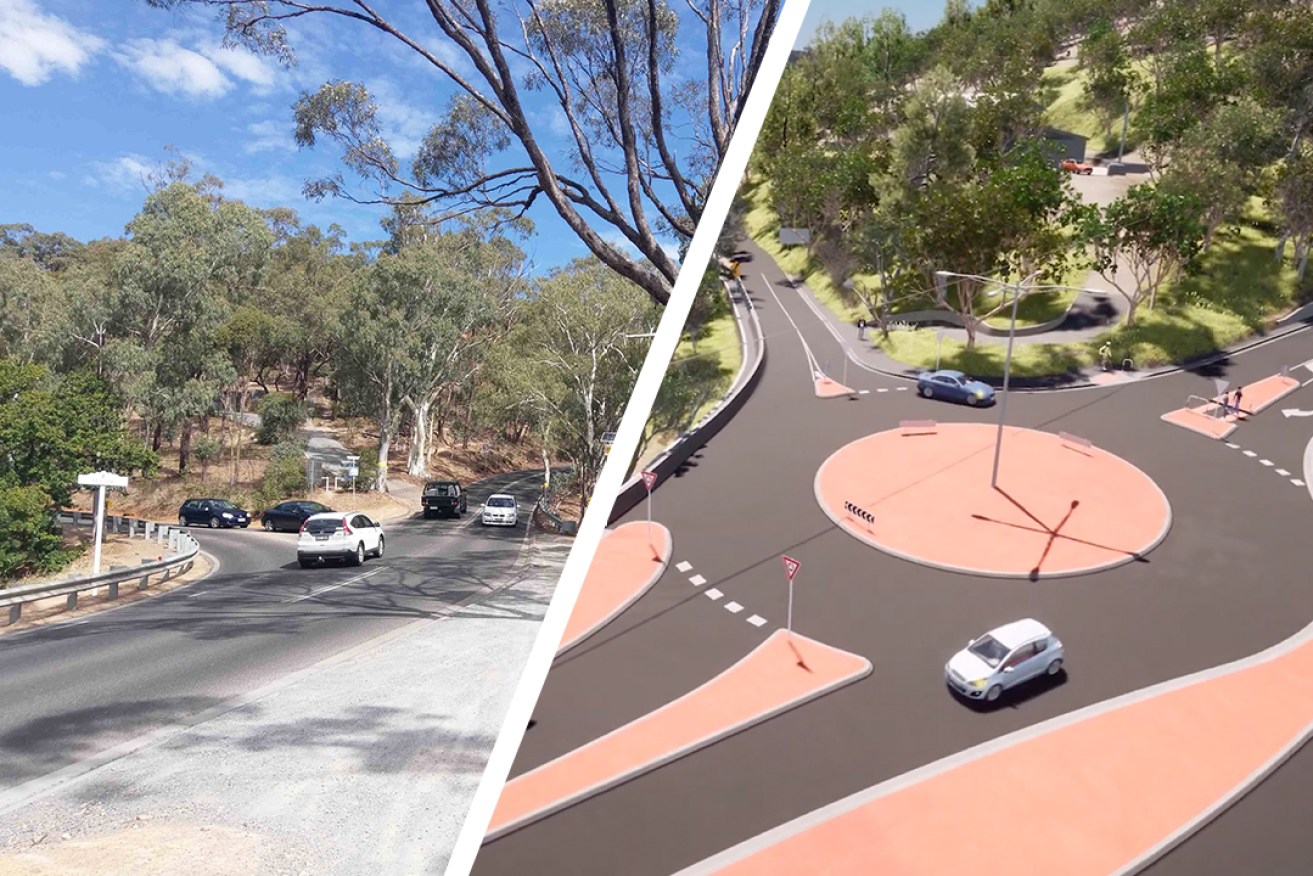
The intersection of James Road and Old Belair Road is set to undergo a $20 million upgrade to become a single lane roundabout with a northern bypass lane (Left photo: Greg O'Grady; right photo: Department of Infrastructure and Transport).
The Federal Government announced in May 2019 that the Mitcham Hills T-junction where James Road meets Old Belair Road would be transformed into a single-lane roundabout with a bypass lane for city-bound traffic, in a bid to ease peak-hour congestion.
Old Belair Road is the most direct route to the Adelaide CBD from Belair, while James Road feeds traffic into it from Hawthorndene, Glenalta and the Upper Sturt area.
At morning peak hour, traffic often banks up on James Road as commuters struggle to turn right at the unsignalled T-junction due to the volume of city-bound traffic heading north on Old Belair Road.
Around 17,500 cars pass through the intersection each day, according to a study conducted by the Department of Infrastructure and Transport in September 2019.
Early works have commenced on the roundabout upgrade with major construction expected to start late this year and completion scheduled for the third quarter of 2022.
But local opposition to the project has prompted Mitcham Council Mayor Heather Holmes-Ross to call for a temporary suspension of works.
“The community are concerned that we might be spending $20 million on a roundabout that isn’t necessary,” she said.
“So from my point of view, it’s worth halting the process to see if that’s the case.”
She highlighted other upgrades scheduled for the area which could ease pressure on the James Road intersection.
Among them is a $20 million State Government-funded upgrade of the Belair Triangle, which will see traffic lights installed at the intersection of Main Road and Russell Street – the latter of which feeds traffic into the southern portion of Old Belair Road.
“The idea with traffic lights is you’ll get gaps in the flow,” she said.
She also said the unsignalled T-junction between Laffers Road and Main Road should be looked at for a traffic light upgrade, given the intersection feeds vehicles into the Belair Triangle.
“It’s difficult at the moment to understand why this project (James Road/Old Belair Road) was chosen,” she said.
“We’ve been told that it’ll be more safe, but the stats show that there’s been very very few accidents at that intersection.”
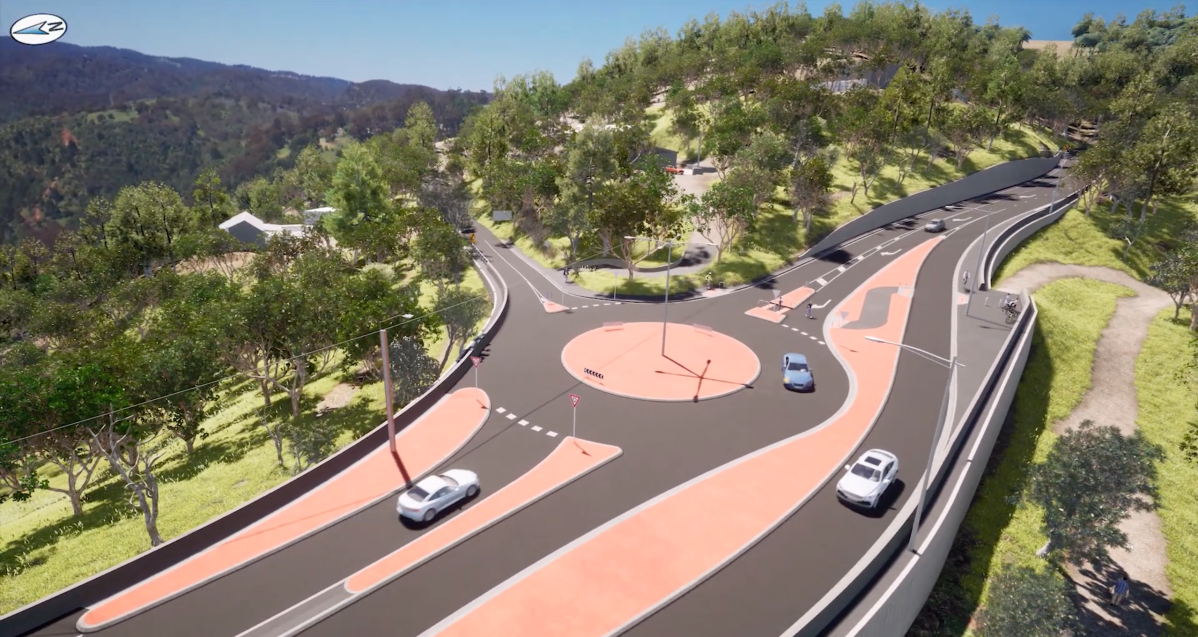
An artist’s impression of the James Road/Old Belair Road intersection upgrade, which contains a dedicated bypass lane for city-bound traffic (Image: Department of Infrastructure and Transport).
There have been six crashes at the James Road/Old Belair Road T-junction from 2016 to 2020, with three of them resulting in injuries, according to State Government road crash data.
Further down the road, the roundabout between Blythewood Road and Old Belair Road has seen 19 crashes during the same time period.
Overall, there have been 50 crashes along Old Belair Road from 2015 to 2019, according to a State Government report on the intersection upgrade submitted to the Public Works Committee last year.
The Mayor’s call for a temporary halt to works has been echoed by Waite MP Sam Duluk, who has been a proponent of the upgrade alongside Federal counterpart Nicolle Flint.
The Independent MP now says he has asked the Department to delay the project until the Belair Triangle upgrade is completed.
“Once the Belair Triangle project is finished, new traffic modelling can be used to determine whether the James Road is still priority compared [to] other troublesome intersections such as Laffers Road,” he said.
“By not running these two projects simultaneously, this will reduce the inevitable road work delays for commuters, alleviate pressure on Belair Road and provide better access in an emergency situation.”
Duluk said “not doing anything” at the James Road intersection is not an option as “we cannot have traffic banked-up and unable to move in the situation of a bushfire”.
“Upgrading this intersection is not only important for motor vehicle users but also pedestrians, cyclists and our avid mountain biking community,” he said.
“I have been out in the electorate door knocking and speaking to the residents of Belair and Glenalta, many who have been calling for improvements to the condition of James Road and Old Belair Road for some time.”
The intersection upgrade also includes a new pedestrian and cyclist crossing, LED lighting and the erection of retaining walls along the roadside.
The Department of Infrastructure and Transport is yet to release the feedback it received during its public consultation process undertaken on the project in January and February of 2020.
The feedback has been the subject of freedom of information requests from Duluk’s office as well as requests from Mitcham Council.
Holmes-Ross said it was “disappointing” this had not yet been made public.
“Without the consultation results, it’s difficult to understand whether or not this is good project to spend $20 million,” the Mayor said.
“It’s frustrating when projects are announced on the eve of elections without consultation results, because council have a range of projects that we think are really important for the community that have been consulted on.”
InDaily asked the Department whether it planned on releasing the results of its first community consultation but did not receive a direct response.
“Community engagement with residents, land owners, business owners and other stakeholders is an important part of the project, and a range of communication and engagement strategies have been undertaken to seek community feedback,” a Department spokesperson said.
“In January 2020, information regarding the project planning study was released to over 8,300 local households and businesses, with an invitation to participate in the feedback process or register for updates.
“On 24 August 2020, during project planning, the City of Mitcham was briefed on the preferred option for the upgrade.”
Duluk was also critical of the Department for keeping the feedback under wraps.
“I am disappointed that DIT have yet to provide community access to the other solutions they investigated and the stakeholder research they conducted,” he said.
“The community is entitled to their feedback and understanding of the process in which DIT make their decisions.”
The project’s concept designs were also open to public consultation from February 25 to May 7 this year, with two community information sessions held during this period.
A Department spokesperson said the sessions “provided an opportunity for members of the community to get an update on the project, talk to the project team and ask any questions”.
The spokesperson also said a “summary” of the second round of feedback is expected to be released shortly.
Fears hundreds of native trees face the axe
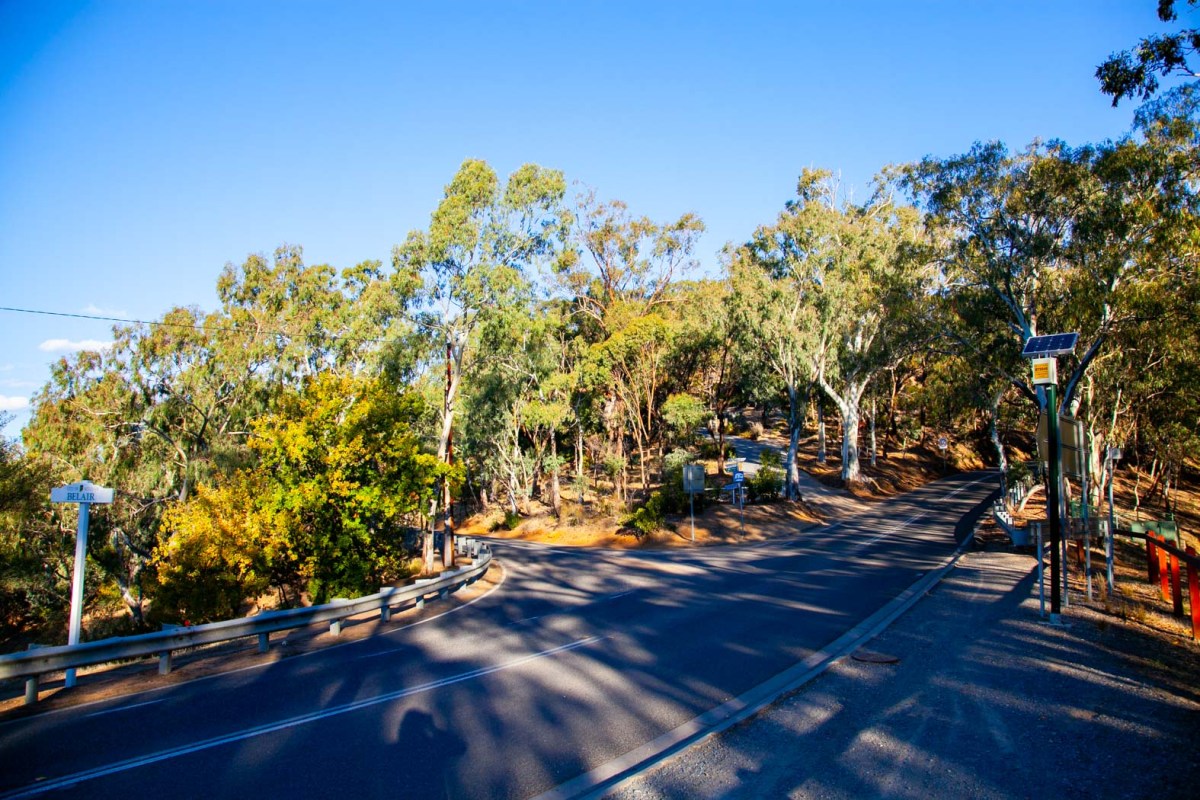
Endangered Grey Box Grassy Woodlands trees surround the James Road/Old Belair Road intersection (Photo: Yuri Poetzl).
The expansion of the intersection will require the removal of native vegetation, including what locals estimate could be scores of endangered Grey Box eucalyptus trees.
The woodlands which line Old Belair Road are owned by Mitcham Council and managed by conservation group Trees for Life.
The area contains hundreds of Grey Box Grassy Woodlands eucalyptus trees, which the Federal Government listed as an endangered species in 2010, following advice from the Threatened Species Scientific Committee that around 85 to 90 per cent of the trees had been felled since European settlement.
The Friends of Old Belair Road community group estimate that 288 trees in the grassy woodlands area would be lost for the infrastructure upgrade.
But the Department says approximately 42 Grey Box trees have been identified for either pruning or removal, based on a design of the project which is 70 per cent completed.
A further 105 native trees face the axe based on the same designs, the Department says.
“The removal of vegetation is an unfortunate consequence of infrastructure projects, and all efforts are continuously made to reduce impacts,” a Department spokesperson said.
“These impacts are managed in accordance with legislative requirements. As part of the detailed design process, all efforts will be made to avoid impacts to vegetation, where practically possible.”
Under the Commonwealth’s Environment Protection and Biodiversity Conservation Act 1999, the Department is required to submit a referral to Federal Environment Minister Sussan Ley for authorisation before any felling of Grey Box trees can take place.
The Department will also have to obtain clearance approval under the State Government’s Native Vegetation Act 1991.
“This will include payment of the appropriate Significant Environmental Benefit offset to the Native Vegetation Fund,” the spokesperson said.
Trees for Life CEO Natasha Davies wrote to Infrastructure and Transport Minister Corey Wingard last month warning the Grey Box site would be “significantly impacted” if the roundabout project were to go ahead.
“Hundreds of hours of volunteer effort has been contributed towards improving the native vegetation on this site and this has been supplemented by contractor weed control funded through City of Mitcham and the former Natural Resource Management Board,” Davis wrote on August 20.
“While we appreciate the need to improve road safety, we would like to see alternative options that do not require the clearance of significant numbers of trees and other vegetation.”
Duluk said the community “shouldn’t have to choose between a functioning safe intersection and our environment”.
Residents, councillors divided over proposal
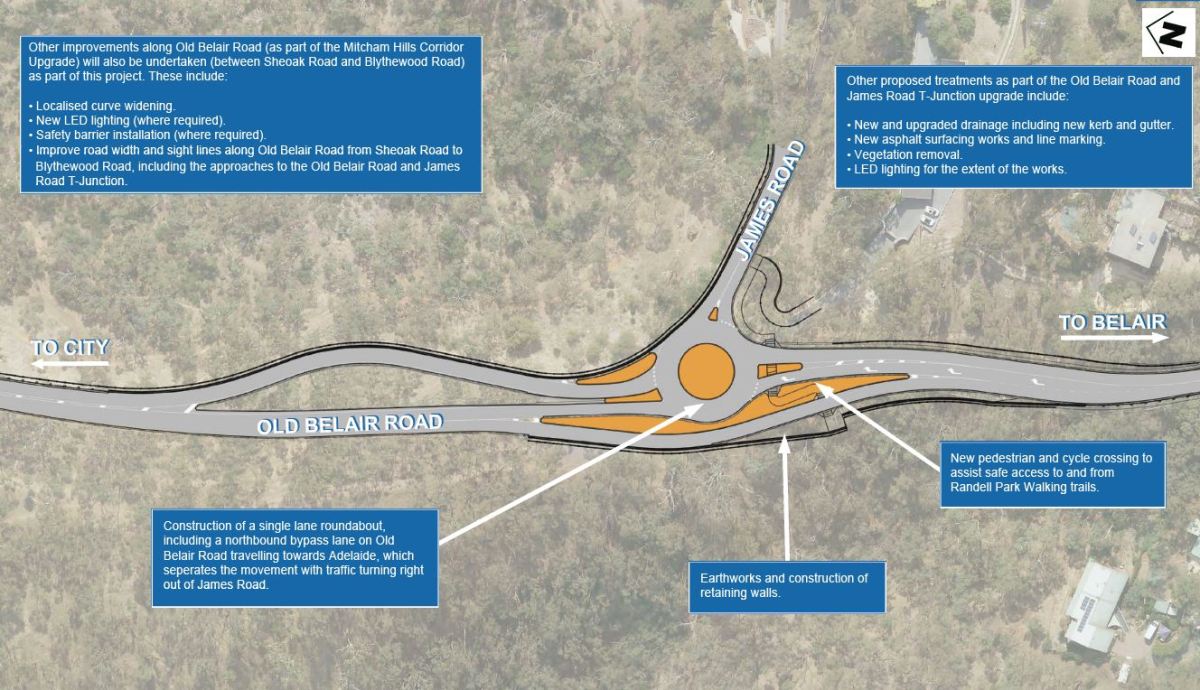
A diagram of the James Road/Old Belair Road Infrastructure upgrade (Photo: Department of Infrastructure and Transport).
A Friends of Old Belair Road petition calling for works to be halted on the project has ticked over 330 signatures, with the group holding ongoing protests at the upgrade site.
The group’s coordinator, Greg O’Grady, said protestors have been standing outside the intersection over the past three weeks and observing peak hour traffic.
“It’s quite incredible when you sit back and watch that intersection – the traffic does flow,” he said.
“Of course, James Road doesn’t get the same priority, but James Road is a relatively minor road by comparison to Old Belair Road.”
But City of Mitcham Park Ward Councillor Corin McCarthy, whose electorate covers the James Road intersection, said improving access to Old Belair Road is one of the most important issues for his constituents.
“What I do know from the 2018 election where I doorknocked nearly 1800 households [is] that in Hawthorndene and Glenalta … it’s one of the key issues that government has an influence over in their lives,” he said.
“I’m not sure that the roundabout itself is the issue, the issue is actually just access to Old Belair Road and however that’s improved.
“At the moment, [Hawthorndene and Glenalta residents] don’t go down James Road, because if you do, essentially you’re sitting there looking at traffic go past you for half an hour – it’s just a complete waste of time.”
McCarthy, who is a Glenalta resident, said the community “just need to see what the true solution is”.
“I’m sure the government will make a decision based on all the evidence,” he said.
He also noted that minimising tree loss would be an important part of the final proposal.
“I think the trees are a really fundamentally important issue for Hills residents, perhaps more than I realised when I initially became a councillor,” he said.
“So however the Department can manage that, they will need to if it’s going to be a viable solution.”
Fellow Park Ward Councillor Jane Bage labelled the roundabout a “band aid” fix.
“I don’t think it’s going to solve the traffic congestion problems – it’s just going to move them a bit further down the road,” she said.
“We really need to be looking at how we manage traffic in the Hills and try and get people to not be so dependent on cars.
“It’ll be ugly as well; it’ll really look suburban – big retaining walls.”
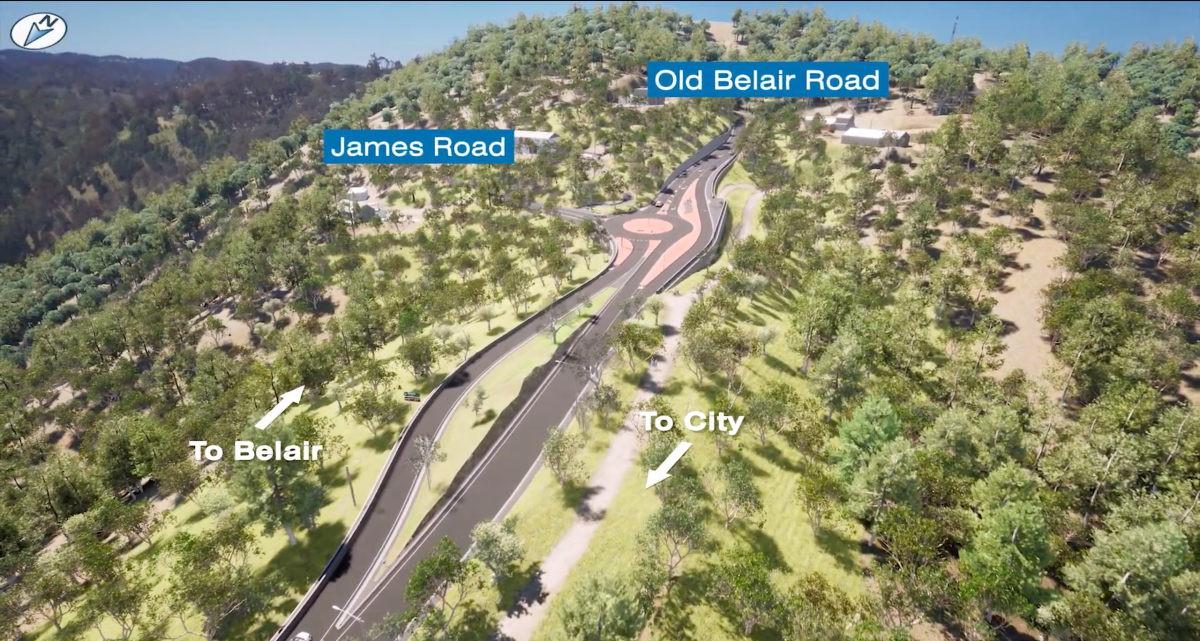
Artist impression released in February 2021 of the Old Belair Road/James Road upgrade (Photo: Department of Infrastructure and Transport).
The Park Ward Councillor said 21 people had contacted her office about the proposal with only one in favour of the project.
Bage suggested express trains into the city on the Belair line at 15-20 minute intervals at morning peak hour would be a better solution.
Her concerns that the upgrade would not fix traffic flow were backed by a senior transport planner with more than 30 years experience.
The planner, who declined to be named due to their company’s contracts with the State Government, said the project “won’t necessarily solve the queuing” problem and “could make the crashes worse”.
“I don’t believe they’re going to do it for the cost that they say because of the retaining walls and structures that are required to take out the large number of trees,” they said.
“And then the bypass lane where it merges back into the traffic lane, I think that could cause just as much congestion as you’ve got at the James Road intersection.”
The planner said the project could create unintended consequences in the afternoon peak hour when the bulk of traffic on Old Belair Road is returning from the city.
“You could end up with quite a long queue southbound in the evening, simply because people are having to slow down for the roundabout, whereas at the moment they don’t have to slow down for the intersection at all,” they said.
“That section of Old Belair Road going north from the roundabout is very twisty and turny with very poor sight distance – so vehicles could end up coming up against the back of the queue at any moment.
“[It will be] far more dangerous than the queue people are used to on James Road.”
But for Glenalta resident Paul Bladon, who uses the James Road intersection twice at peak hour every weekday, an upgrade to the notorious T-junction is vital.
“Safety wise, it’s not a good intersection at all,” he said.
“When you’re sitting on James Road, your sight line on the down track is not great because cars and motorbikes all disappear briefly behind trees before they reappear into your sightline.
“I’ve experienced a couple of very near misses, one when both of my kids were in the car, and it would have been very bad – and I know other people who’ve had near misses as well.”
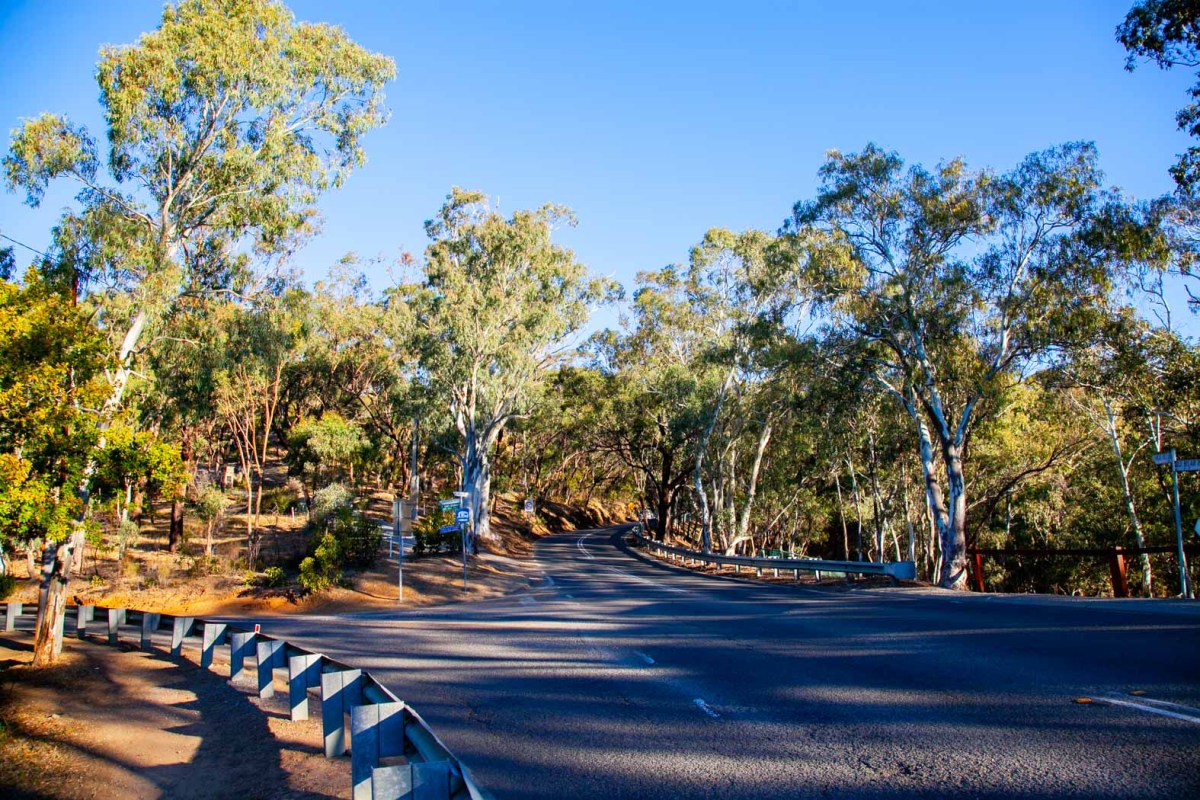
A view of the sight distance for cars turning right onto Old Belair Road at James Road (Photo: Yuri Poetzl).
He said before the project was announced, he used to spend “10 to 20 minutes just sitting on James Road to even get to the intersection”.
Around 4400 vehicles use James Road every day, according to the September 2019 study conducted by the Department.
“[With] public knowledge, a lot more people on the down track of Old Belair Road are now letting people in more often,” he said.
“If the intersection works are canned and nothing happens, maybe people will keep being more considerate, or maybe it will just gradually drift back to the way it was.”
Bladon said a roundabout would make it “much smoother” for James Road users to access Old Belair Road.
“I’m not necessarily married to the idea of a roundabout, I take people’s points about the trees and the ecological impact,” Bladon said.
“But I think something has to be done there.”




